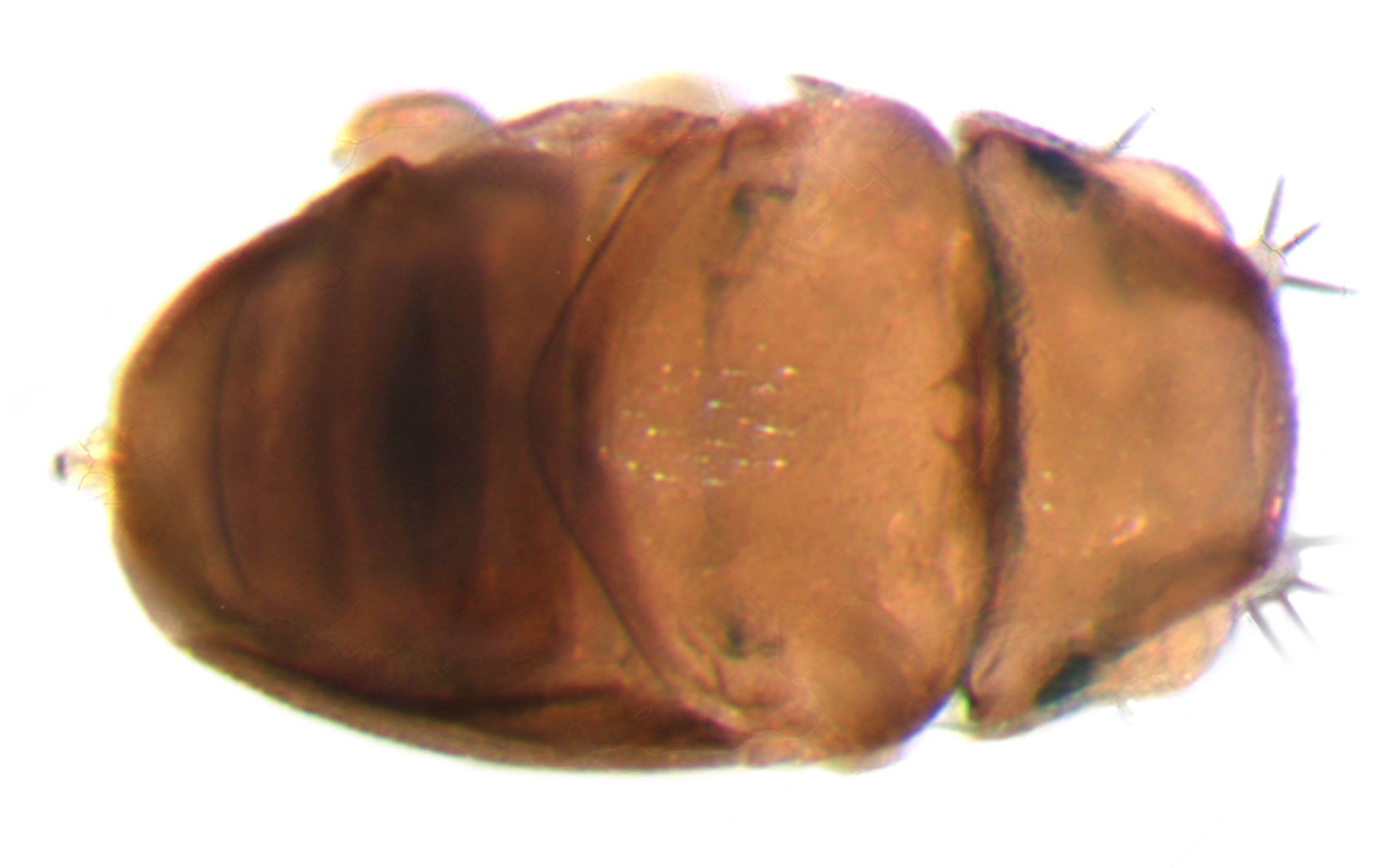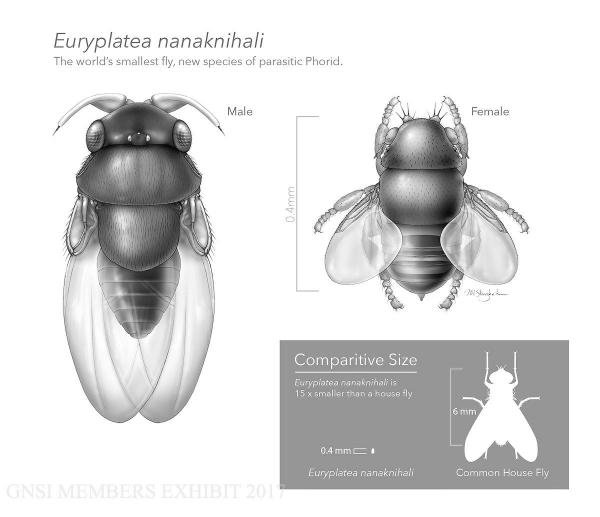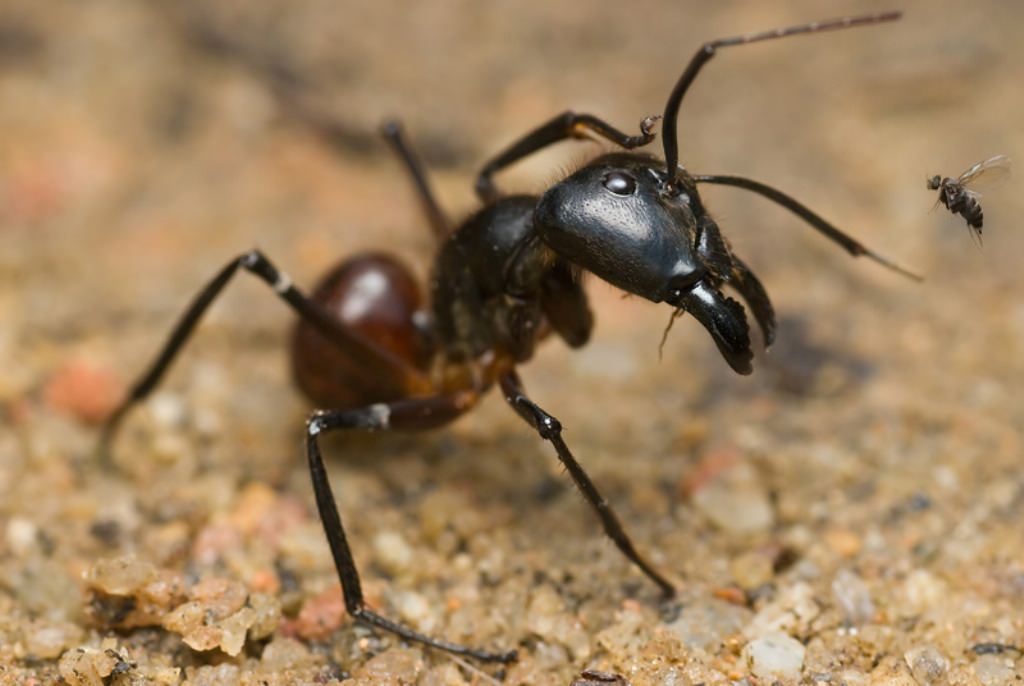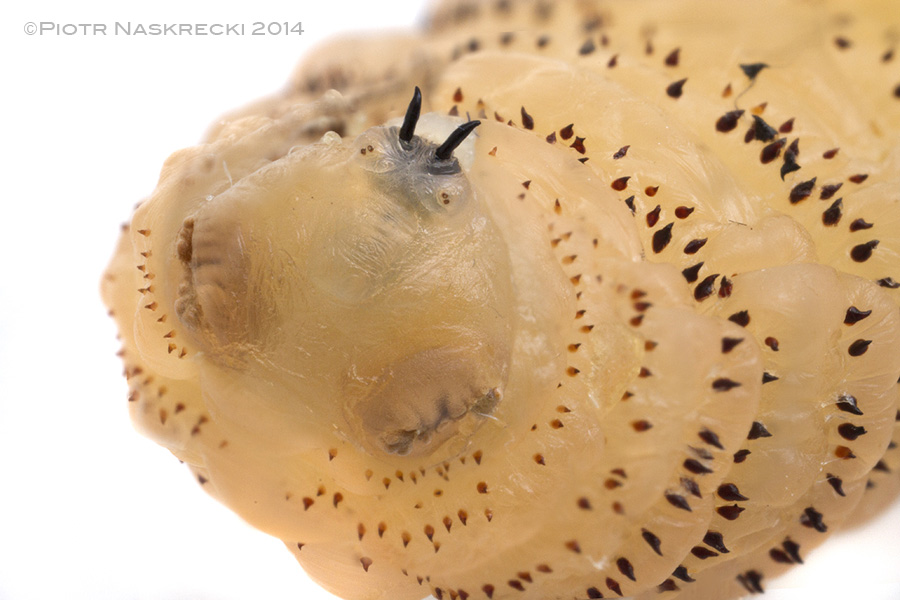People perceive flies as a small irritant. Relatively harmless insects that cause disgust, because usually associated with manure. So, the maximum damage that can cause this little insect is to sit on a piece of delicious steak you wanted to eat.
Perhaps, it is worth saying thanks to Mother Nature for the fact that we got off so easily. Ants of the genus Crematogaster, which includes 460 species, are lucky a lot less.
It would seem the most obvious answer to the question "how do flies hurt ants?" is "eat them". Indeed, usually flies to have the same size as the ants, sometimes a little more sometimes a little less. So what else can they do? This is the correct answer, but the mechanism of eating is not so obvious…
Small Enough

[image source]
This brown lump has the proud name Euryplatea nanaknihali and is the smallest fly in the world. The size of the adult specimen reaches only 0.4 mm. It is difficult to imagine how she is able to fly, because with such tiny sizes any wind blow turns into a real hurricane.
However, these flies are able to overcome certain distances to find their main purpose in life - Ants.
Ants of the genus Crematogaster have a size of 2-6 mm, 10 times larger than Euryplatea nanaknihali. But, flies do not need to fight, their size is their advantage, which allows quietly get close to the victim. As you may have guessed Euryplatea nanaknihali is a parasite type.

Euryplatea nanaknihali is very tiny. But, the smallest insect is Fairyfly Wasp 0.14 millimeters in length.[source]
Such type of parasitism is called myrmecophily. Usually, other insects use pheromones to trick ant’s perception, what allows invaders to penetrate deep into the anthill, eat larvae, get protection or just pretend to be one of the ants. But Euryplatea nanaknihali is so small and maneuverable that even the smallest ants are unable to cause her any harm.
Highly Dangerous
Using a small sting, the fly lays eggs in the ant's body, usually near the back or abdomen. The larvae begin to devour the muscle fibers, because they are the most nutritious, and gradually advance to the head of their carrier.

From the size of an ant depends the number of eggs which the fly will lay. Usually inside one ant survive 1-3 larvae.[image source]
Getting into the head, first the larvae eat the muscles that are responsible for the movement of the jaws of the ant – mandibles. At this point, the carrier is already can't move, and now loses the ability even to eat. Brain will be eaten last, as a dessert.

To the time of maturation, the adult fly can reach the size of the carrier's head.
As a result, the head falls off from the body and becomes a temporary housing for almost adult larvae. Two weeks later the adult formed flies will gnaw the way out and go in search of food and new ants to repeat the cycle.
Close your ears
By the way, in the beginning of this article I mentioned that the flies can't cause serious harm to people. Well, I lied.
In 2013, a British tourist Rochelle Harris brought home the unpleasant souvenir from Peru. Doctors removed from her ear 8 carnivorous larvae, which were the offspring of screw-worm fly Cochliomyia hominivorax.
I care about the readers, so I did not upload pictures here. But, if you already ate, you can click on the link.
Usually these flies lay their eggs in the flesh of warm-blooded animals, mainly in open wounds on the body of cattle or the navels of newborn animals. Other parts of the animal's body are well protected with wool and dense skin. In this case, the human ear turned out to be a remarkable entry point without protection mechanisms.

The larva of Cochliomyia hominivorax. [image source]
After 24 hours, the larvae hatch from the eggs and beginning to devour the flesh of their carrier. The structure of their body is like the screws, the skin integument is durable and sharp enough to literally "screwed" in in the flesh.
Don't worry, the tourist survived, the larvae had chewed only a small tunnel with a depth of 12 mm.
Have a nice day my friends!

That is pretty terrifying. 12mm still sounds like a lot of ear! I did not click into that picture.
Downvoting a post can decrease pending rewards and make it less visible. Common reasons:
Submit
Only 8 larvae managed to do that, usually Cochliomyia hominivorax lays up to 200 eggs, imagine what they could do! In this case, the contact with human was very short.
Downvoting a post can decrease pending rewards and make it less visible. Common reasons:
Submit
You really lectured me. Thanks for sharing
Downvoting a post can decrease pending rewards and make it less visible. Common reasons:
Submit
Thank you for reading. I'm glad you learned something new.
Downvoting a post can decrease pending rewards and make it less visible. Common reasons:
Submit